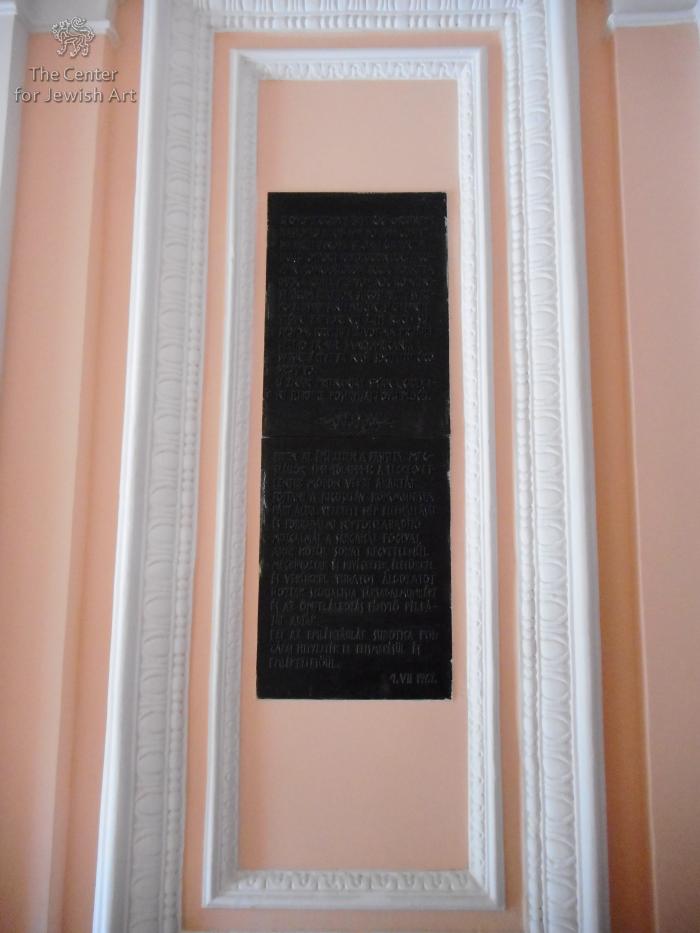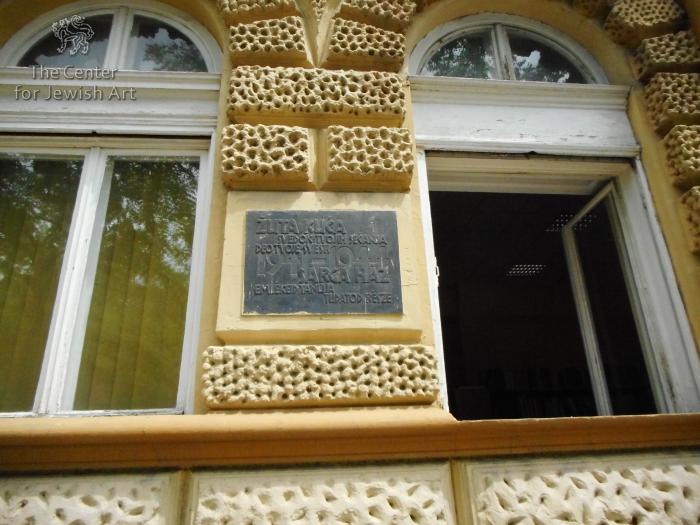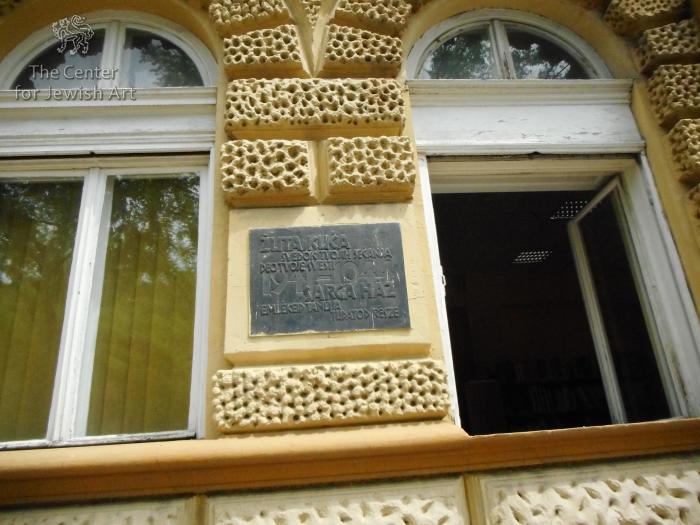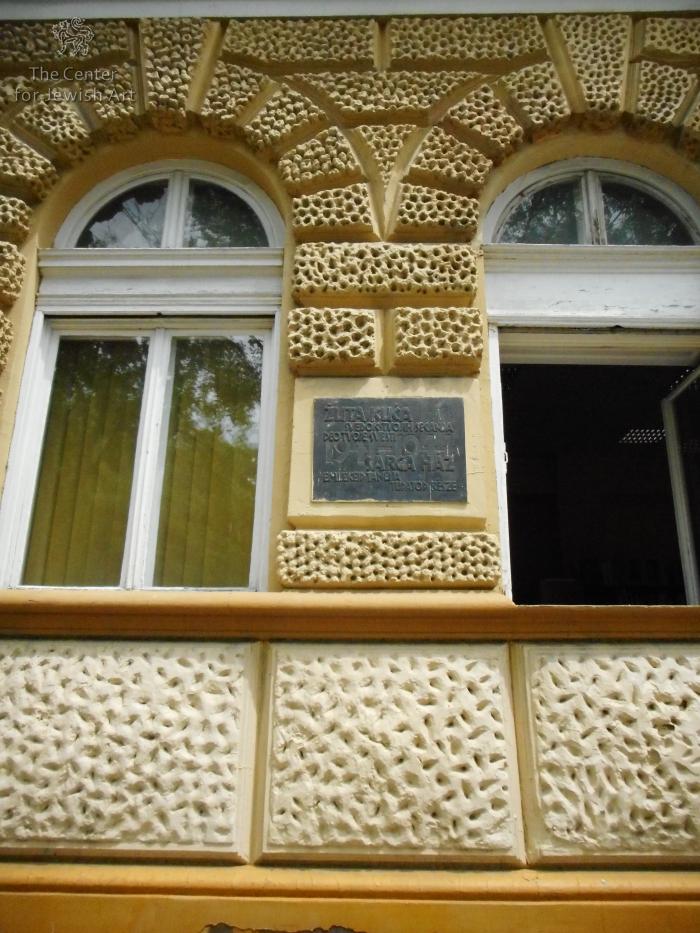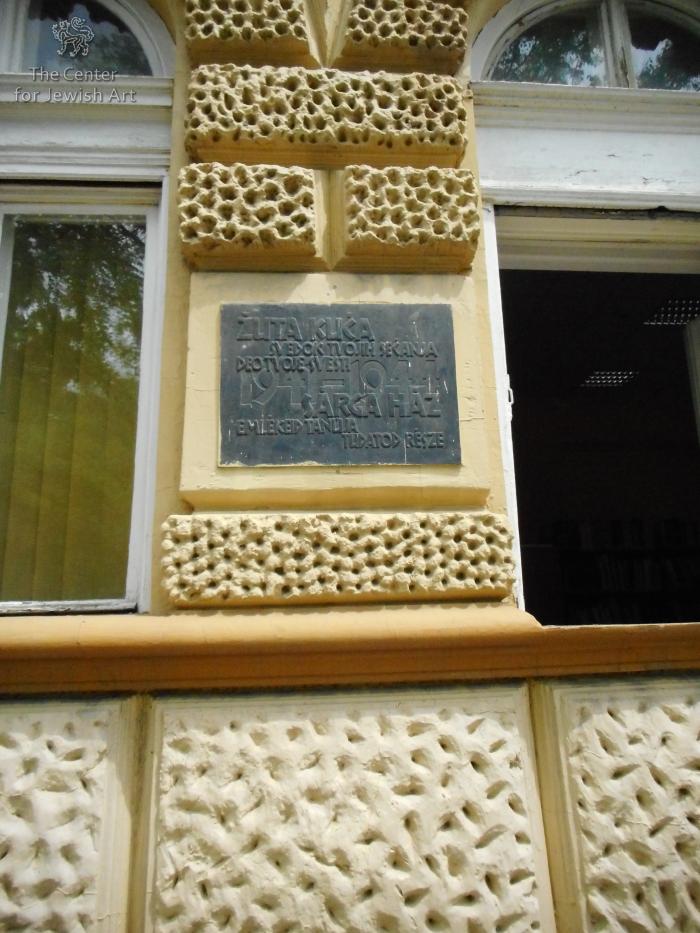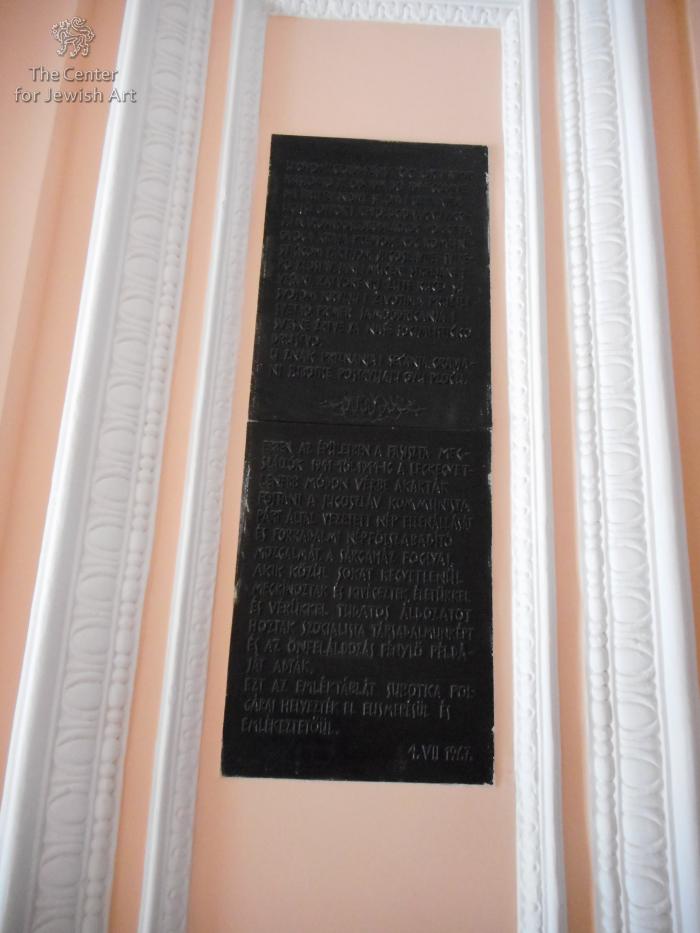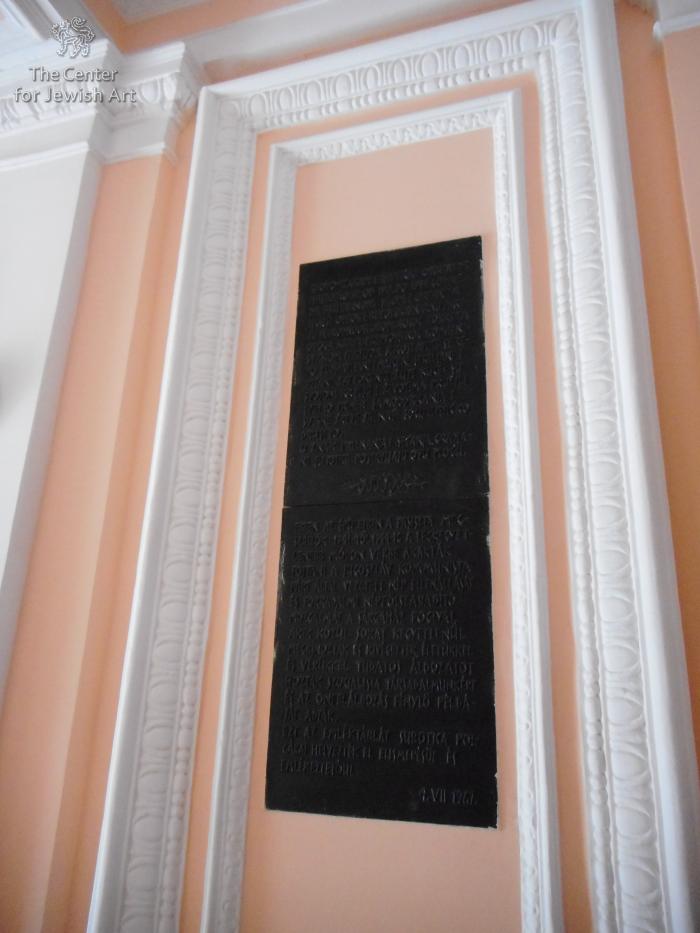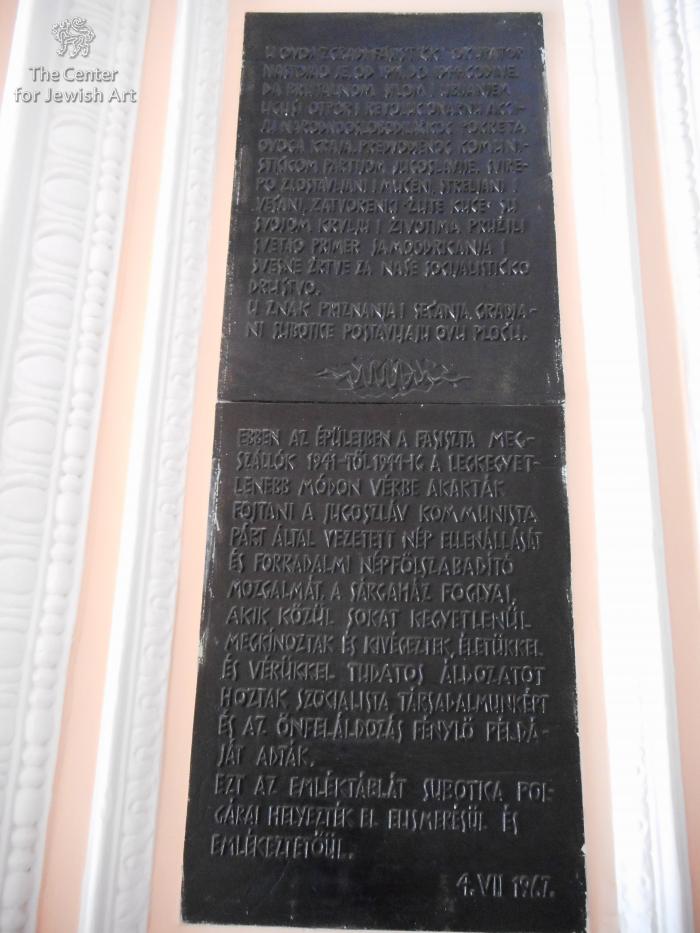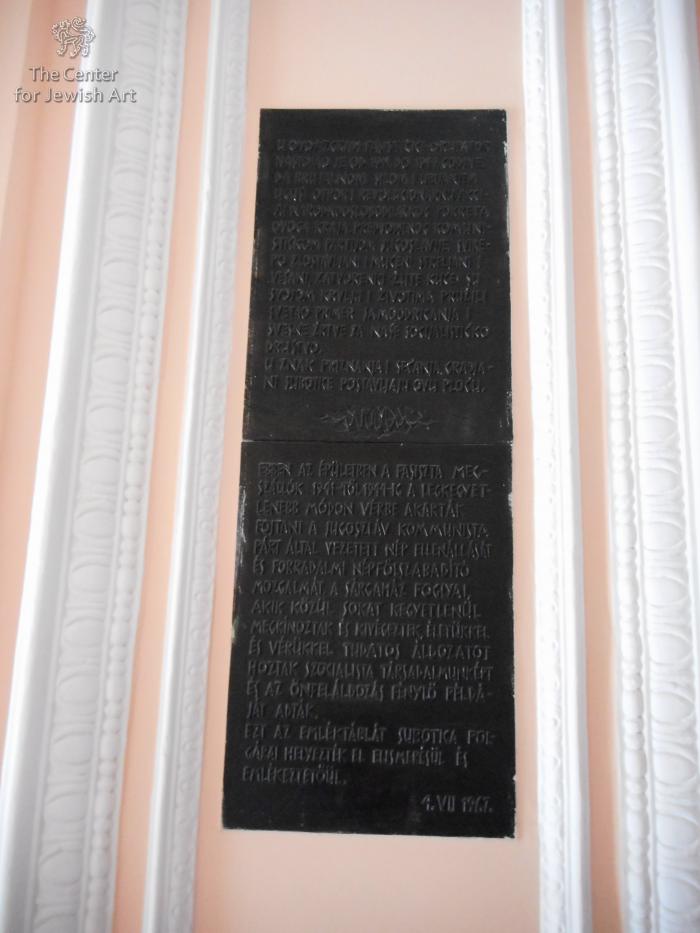Obj. ID: 50277 Holocaust Memorial Plaques at the Yellow House in Subotica, Serbia, 1967

Memorial Name
No official name
Who is Comemmorated?
Victims of the Holocaust tortured and murdered in the Yellow House.
Description
Two rectangular plaques made of bronze, one on the facade of the building to the right of the entrance and another on an interior wall right inside the entrance to the building, feature inscriptions in Serbo-Croatian and Hungarian that identify the house as a Holocaust Site, and explain the historical narrative.
Inscriptions
Plaque on the façade (identical in both languages):
Serbo-Croatian
Žuta kuća, svedok tvojih sećanja, deo tvoje svesti 1941-1944
Hungarian
A Sárga Ház az emlékeid tanúja, tudatod része 1941-1944
Translation: The Yellow House, a witness of your recollections, part of your consciousness 1941-1944
Plaque inside the building (identical in both languages):
Serbo-Croatian
U ovoj zgradi fašistički okupator
nastojao je od 1941. do 1944. godine
da brutalnom silom i ubijanjem
uguši otpor i revolucionarnu akc-
iju Narodnooslobodilačkog pokreta
ovoga kraja predvođenog Komuni-
stičkom partijom Jugoslavije. Svire-
po zlostavljani i mučeni, streljani i
vešani, zatvorenici Žute kuće su
svojom krvlju i životima pružili
svetao primer samoodricanja i
svesne žrtve za naše socijalističko
društvo.
U znak priznanja i sećanja građa-
ni Subotice postavljaju ovu ploču
Hungarian:
Ebben az épületben a fasiszta meg-
szállók 1941-től 1944-ig a legkegyet-
lenebb módon vérbe akarták
fojtani a Jugoszláv Kommunista
Párt által vezetett Nép ellenállását
és forradalmi népfőlszabadító
mozgalmát.. A Sárgaház foglyai,
akik kőzül sokat kegyetlenül
megkínoztak és kivégeztek, életükkel
és vérükkel tudatos áldozatot
hoztak szocialista társadalmunkért
és az önfeláldozás fénylő példá-
ját adták.
Ezt az emléktáblát Subotica pol-
gárai helyezték el elismerésűl és
az emlékeztetőűl.
Translation: In this building the fascist occupier tried, from 1941 to 1944, to suppress the resistance and revolutionary action of the People's Liberation Movement of this region, led by the Communist Party of Yugoslavia, by brutal force and killing. Cruelly abused and tortured, shot and hanged, the prisoners of the Yellow House, with their blood and lives, set a shining example of self-sacrifice and made a conscious sacrifice for our socialist society.
4. VII. 1967
Commissioned by
The Municipal Board of the Union of Veterans of Subotica
The "Yellow House" was built in 1883. Until the Second World War, it housed a savings bank ('Eskont' bank). From September 19, 1941, it housed the Department of the Hungarian Occupation Counter-Intelligence Service (Kémelháritó). During the period of the Hungarian occupation, investigations were conducted in this building, and it also served as a notorious prison and torture chamber. About five hundred people went through torture in the Yellow House. After nazi Germany occupied Hungary in March 1944, the Gestapo had its headquarters there. The building also served as a temporary prison until the end of World War II.
After the war, the State Security of Yugoslavia moved into the building. Later, it housed various institutions and today is a college for teachers in the Hungarian language.
Two commemorative plaques by sculptor Ana Bešlić (1912-2008) were unveiled on July 4, 1967. The initiative for this came from the Municipal Committee of the League of the Subotica Fighters. The memorial plaques commemorate victims tortured and murdered in the Yellow House.
Bašaragin, Margareta, Antifašistkinje Subotice: skojevke, partizanke i afežeovke. (Novi Sad: Futura, 2021)
Duranci, Bela and Vera Gabrić Počuča, Javni spomenici opštine Subotica, (Subotica: Međuopštinski zavod za zaštitu spomenika kulture, 2001)
"Memorials in Subotica,” Locations (Vojvodina Holocaust Memorials Project), https://www.vhmproject.org/en-US/Locations/Memorials/22 (accessed June 28, 2023)
Simin, Magda, Dok višnje procvetaju, (Novi Sad: Izdavačko preduzeće Jedinstvo, 1958)




